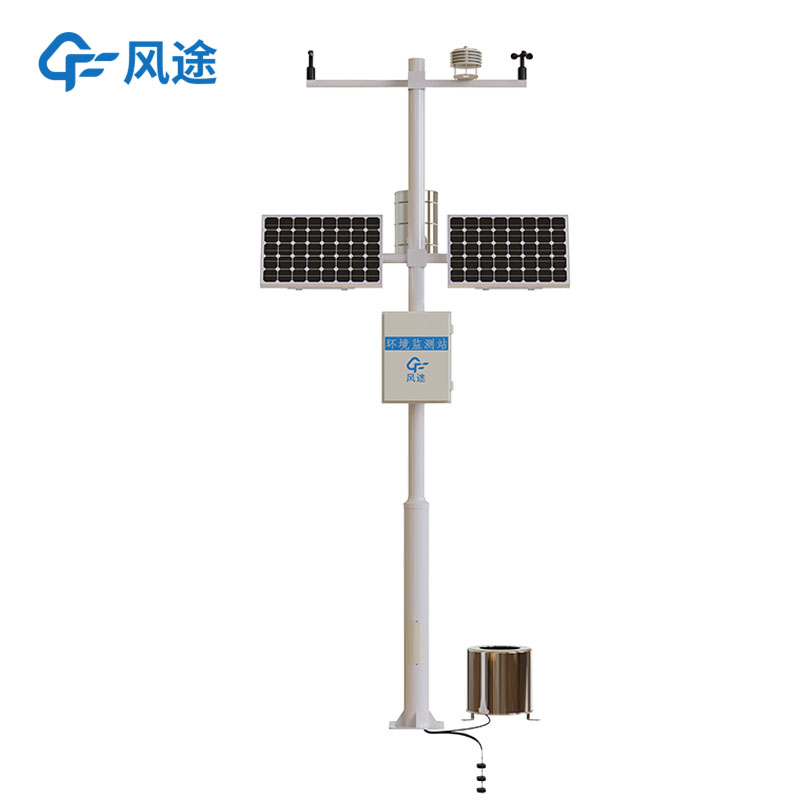Shandong Fengtu IOT Technology Co., Ltd
Sales Manager:Ms. Emily Wang
Cel,Whatsapp,Wechat:+86 15898932201
Email:info@fengtutec.com
Add:No. 155 Optoelectronic Industry Accelerator, Gaoxin District, Weifang, Shandong, China

Sales Manager:Ms. Emily Wang
Cel,Whatsapp,Wechat:+86 15898932201
Email:info@fengtutec.com
Add:No. 155 Optoelectronic Industry Accelerator, Gaoxin District, Weifang, Shandong, China
time:2025-01-08 09:17:51 source:Weather Station viewed:315 time
For a long time, agricultural production has largely relied on experience and the observation of the weather. When it comes to sowing, irrigation and dealing with extreme weather conditions, decisions often depend on traditional wisdom passed down orally. Nowadays, agricultural meteorological stations are helping agriculture break free from the dilemma of relying on "experience" and move towards a precise era of "relying on data".
Agricultural meteorological stations are usually located in production areas such as farmlands, orchards and vegetable bases. They are precision instruments that integrate multiple high-techs. Temperature sensors accurately monitor changes in atmospheric temperature, helping farmers identify the right time for spring sowing and autumn harvesting. Humidity sensors keep track of the moisture content in the air and soil in real time, providing a basis for irrigation and avoiding waste of water resources. Illumination sensors quantify the intensity and duration of light, making it convenient for farmers to plant crops at appropriate densities according to the characteristics of different crops.
The data collected by these sensors is quickly aggregated to the cloud or agricultural management centers through the built-in transmission system. Agricultural technicians and farmers can check the real-time weather conditions in the fields at any time through mobile phones and computer terminals. Once the meteorological stations issue disaster warnings such as strong winds, heavy rainstorms and frosts, farmers will have time to reinforce greenhouses and harvest crops in advance to reduce losses.
For example, after a large vegetable planting base introduced agricultural meteorological stations, it arranged farming activities scientifically based on precise data. As a result, water and fertilizer were saved, the annual vegetable yield increased by 10%, the incidence of pests and diseases decreased, and both economic and ecological benefits were achieved.
The popularization of agricultural meteorological stations has promoted the development of agriculture towards scale and intelligence. Large agricultural enterprises use meteorological data to optimize planting layouts, and smart agriculture platforms send personalized farming suggestions, opening up broad prospects for the development of modern agriculture.

Road Weather Sensors FT - N10 is feature - rich and capable of monitoring various weather phenomena such as rain, snow, hail, fog, dew, frost, and dust. It has high detection accuracy, adopting optical, acoustic, and other sensor technologies. The error in rainfall monitoring is small, and it can ac...
The Portable Visibility Detector is an atmospheric visibility monitoring device system that can be flexibly moved and is convenient to carry. Its working principle is mainly based on the optical scattering principle, and the visibility is calculated by measuring the optical properties of the atmosph...
In maritime navigation, poor visibility is an "invisible killer" threatening ship safety. When weather conditions such as dense fog, heavy rain, or sand and dust occur, the visibility distance shortens sharply. Ships not only struggle to observe nearby landmarks, with positioning accuracy...
In the modern transportation system, accurately grasping traffic conditions is crucial for ensuring travel safety and improving traffic efficiency. This relies on a series of advanced instruments, among which Weather Visibility Sensors, Road Condition Sensors, and Laser-based Snow Depth Sensors help...